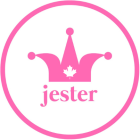
Word of mouth (WOM) has been around for millennia. It’s likely that before humankind had any sort of societal structure, that our ancestors were sharing information about a variety of things like good places to hunt or early tool design, and that their communities trusted and shared that information based on the recommendation of that one individual. However, if we fast forward to the 21st century, ‘modern’ WOM is often accredited to psychologist George Silverman and in the early 1970’s, word of mouth as a marketing strategy was born. Silverman’s “teleconferenced peer influence groups” were a method he employed with the intent to have physicians engage in dialogue about new pharmaceutical products. The success of these groups become evident to Silverman quite quickly.
“One or two physicians who were having good experiences with a drug would sway an entire group of skeptics. They would even sway a dissatisfied group of ex-prescribers who had had negative experiences!”
(Source)
With the introduction of the internet; the ability for faster communication; and eventually the evolution of social media, word of mouth marketing has become incredibly accelerated and valuable and sometimes even controversial, but we won’t get into that here—that’s an entire rabbit hole in and of itself. Anyhow, it’s important to differentiate between organic, earned media WOM publicity and amplified WOM.
- Amplified WOM is an inorganic product of a targeted ad campaign specifically designed to encourage WOM in new or existing communities.
- Organic WOM sees a happy customer share their positive thoughts and opinions of a product or service simply because they had a good experience. This is by far teh most effective of the two.
In fact, organic WOM is so effective that according to Nielsen, 92% of consumers believe recommendations from friends and family over all forms of advertising. Additionally, 88% of people trust online reviews written by other consumers just as much as they trust recommendations from personal contacts. Take those statistics, attach a short and sweet ode to your brand from a happy customer and funnel it through the internet, and in no time at all, you could have hundreds, thousands, and sometimes even millions of people talking about your brand.
Who knows what the future holds in terms of communication. What we do know is that WOM marketing is a tried and true method that speaks volumes for brands that have harnessed its power.
